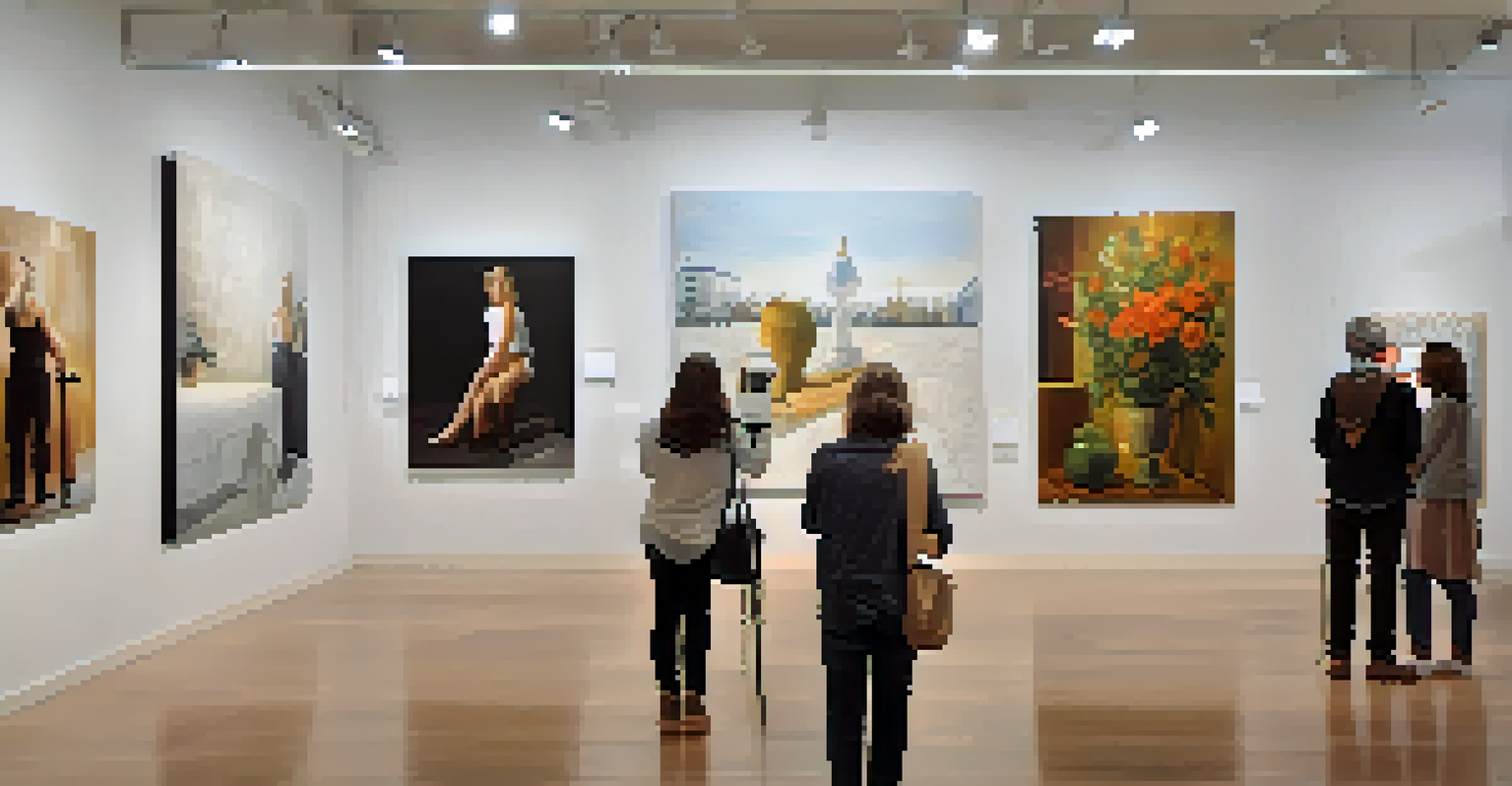Unveiling Hidden Gems: Spain's Lesser-Known Cultural Institutions

The Magic of Smaller Museums: A Personalized Experience
When you think of museums in Spain, names like the Prado or the Guggenheim may spring to mind. However, the country's smaller museums offer a unique charm that provides a more intimate experience. These hidden gems often feature local artists and historical artifacts that showcase the rich tapestry of Spanish culture.
Museums are a way of holding on to the past, but they are also a way of engaging with the present.
For instance, the Museo Carmen Thyssen in Málaga is a smaller counterpart to its more famous namesake in Madrid. It houses a stunning collection of 19th-century paintings, often overlooked by tourists. Visiting such places allows for a deeper connection with the art, often without the crowds that accompany larger institutions.
In these smaller settings, you can engage with the exhibits at your own pace, taking the time to appreciate the intricacies of each piece. This personalized experience can create lasting memories and a genuine appreciation for the art and culture of Spain.
Cultural Centers: The Heartbeat of Local Communities
Cultural centers in Spain serve as hubs for community engagement and creativity. These institutions often host workshops, art shows, and performances that reflect the local culture and traditions. By stepping into a cultural center, you’re not just visiting a space; you’re immersing yourself in the community's heartbeat.

Take the Centro Cultural La Malagueta in Málaga, for example. This vibrant center offers a range of activities from flamenco classes to art exhibitions by local artists. It’s a place where residents and visitors alike can connect, learn, and celebrate the cultural richness of the area.
Smaller Museums Offer Intimacy
Visiting smaller museums in Spain provides a personal connection to art and culture, often free from the crowds found in larger institutions.
Visiting a cultural center not only allows you to experience local customs firsthand, but it also supports artists and initiatives that may not receive attention from larger institutions. Engaging with the community in this way fosters a deeper understanding of Spain's diverse cultural landscape.
Artisans and Workshops: Preserving Traditional Crafts
Spain is renowned for its diverse artisan crafts, from pottery to textiles. Lesser-known institutions often focus on preserving these traditional skills through workshops and demonstrations. By participating in these activities, you can gain a hands-on understanding of Spain's artistic heritage.
Art is not what you see, but what you make others see.
For instance, the Taller de Cerámica in Granada offers pottery classes where you can learn from skilled artisans. This immersive experience allows you to appreciate the effort and technique that goes into each piece, deepening your connection to the culture. Plus, you get to take home a unique creation as a souvenir!
Such workshops not only help preserve these crafts for future generations but also foster a sense of pride in local traditions. Supporting these artisans contributes to the sustainability of cultural practices that might otherwise fade into obscurity.
Historical Sites: Beyond the Tourist Trail
While many flock to iconic landmarks, Spain is dotted with lesser-known historical sites that tell fascinating stories. These hidden treasures often have rich histories that reveal the complexities of Spain's past, allowing for a deeper understanding of its cultural evolution.
The Alcazaba of Almería, for example, may not be as famous as the Alhambra, but it boasts stunning architecture and a captivating history. The fortress offers a quieter experience, making it easier to imagine the lives of those who once walked its walls. Exploring such sites invites you to delve into forgotten narratives that shaped the nation.
Cultural Centers Foster Community
Cultural centers serve as vibrant hubs for local engagement, offering activities that celebrate and preserve regional traditions.
Visiting these historical gems not only enhances your knowledge but also provides a refreshing contrast to the more commercialized attractions. They remind us that every corner of Spain has a story to tell, waiting to be uncovered by curious travelers.
Unique Libraries: A Haven for Book Lovers
Spain's libraries are treasure troves of knowledge, often overlooked by those seeking cultural experiences. These unique spaces not only house a wealth of literature but also host events that celebrate local authors and literary traditions. For book lovers, they offer a tranquil escape from the hustle and bustle.
The Biblioteca Nacional de España in Madrid is a must-visit, but consider exploring smaller libraries like the Biblioteca de la Ciudad de Almería. These local libraries often feature cozy reading rooms and community events that engage the public in literary discussions. It’s a wonderful way to connect with the culture through its stories.
By spending time in these libraries, you not only enjoy the ambiance but also discover the voices that shape Spanish literature. Supporting these institutions contributes to the preservation of literary culture, ensuring that future generations can enjoy and learn from them.
Festivals Off the Beaten Path: Celebrating Local Traditions
Spain is famous for its vibrant festivals, yet many of the most authentic celebrations occur away from the tourist crowds. These local festivals provide a glimpse into regional traditions, often steeped in history and community pride. Attending one of these events can be an unforgettable cultural experience.
For example, the Fiesta de San Juan in the coastal town of Alicante is a lively celebration featuring bonfires, fireworks, and music. Unlike larger festivals, this event is deeply rooted in local customs, offering a unique opportunity to mingle with residents and experience their traditions firsthand. It’s a chance to witness the joy and camaraderie that define these communities.
Support Emerging Artists' Creativity
Exploring galleries that showcase emerging artists allows visitors to engage with contemporary issues and support fresh talent in the arts.
Participating in such festivals allows travelers to forge connections with locals and gain insights into their way of life. These experiences enrich your understanding of Spain's diverse cultural landscape and create lasting memories that go beyond typical tourist attractions.
Galleries Showcasing Emerging Artists: A Fresh Perspective
While established artists get the spotlight, many galleries in Spain focus on showcasing emerging talent. These spaces serve as a platform for budding artists to express their creativity and engage with the public. Visiting these galleries can provide a refreshing perspective on contemporary Spanish art.
For instance, the Espai de la Memòria in Barcelona highlights works by local artists whose pieces challenge societal norms and provoke thought. These galleries often host exhibitions and events that encourage dialogue between artists and visitors, fostering a sense of community and connection. It’s an opportunity to engage with art that is relevant and reflective of current issues.

Supporting emerging artists not only nurtures the creative landscape but also enhances your own understanding of art's evolving role in society. It’s a chance to be part of a movement that champions innovation and fresh ideas, making your cultural exploration all the more meaningful.